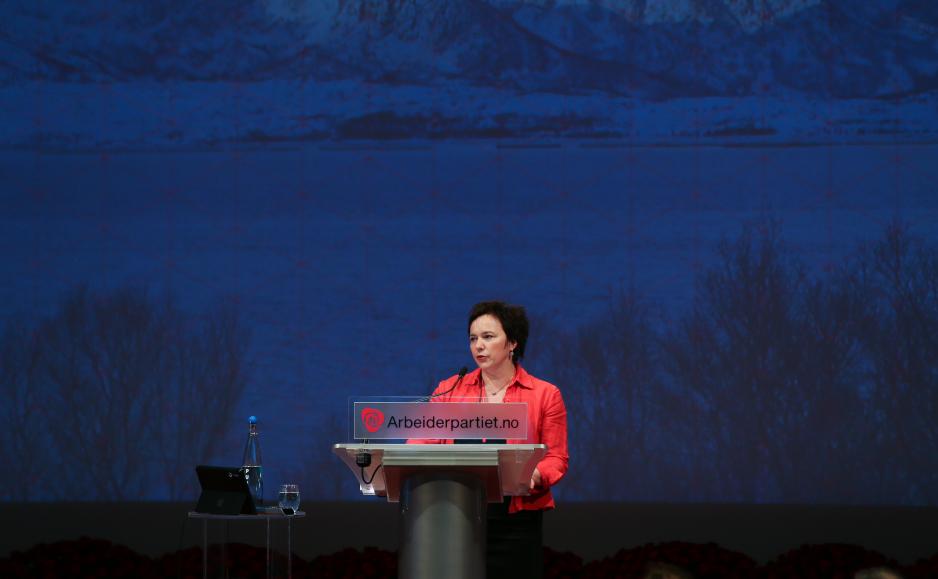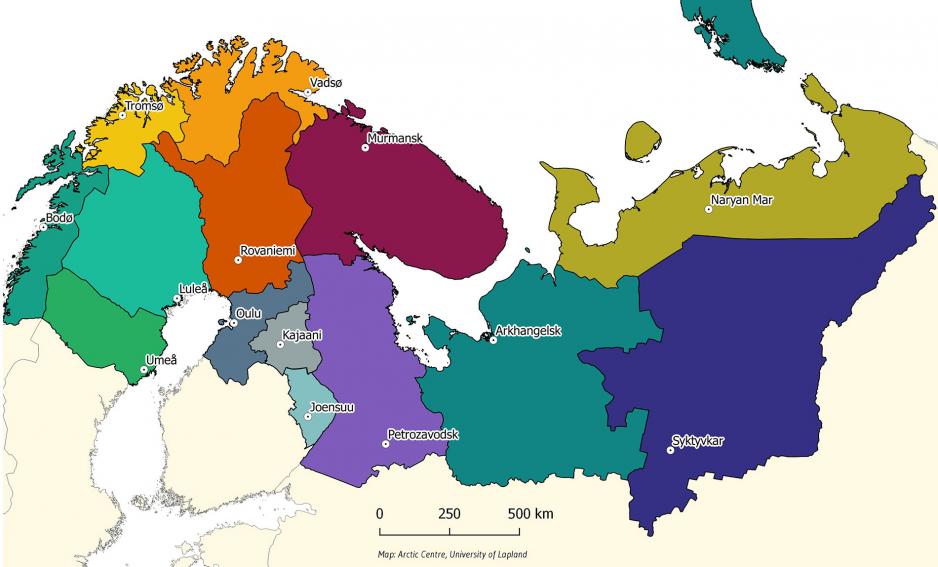Wants to Increase the EUs Knowledge of the Barents Region

Finnmark chairs the regional and international cooperation of the Barents Regional Council for the next two years. Finnmark County Mayor Ragnhild Vassvik aims to make the largest Arctic region far more visible – in EU contexts too.
- It is important to communicate and provide information about the Barents cooperation. We must raise awareness about it and get our message out to an international audience, Vassvik says on the phone to High North News.
Exceptional cooperation
As for the longstanding Barents cooperation, she points out that many cross-border cooperation projects with Russia have ‘survived’ both political and economic sanctions following the Ukraine crisis in2014.
This cooperation has drawn a lot of attention even in the time prior to Russia’s intervention in the Ukraine.
Former leader of the Barents Secretariat and current Mayor of Sør-Varanger, Rune Rafaelsen (Labour), is one of those who repeatedly has argued that many a politician would benefit from studying the Barents cooperation. While chairing the Barents Secretariat he would often have visitors who were representatives from countries far away from the Arctic who wanted to learn more about cooperation in the north.
- Managing to keep this cooperation on its feet is quite unique, and probably also due to the fact that Russia also has wanted to keep it like this, Vassvik says.
This autumn, her home county, Finnmark (Norway), has assumed the chair of the Barents Regional Council after the Finnish region Kainuu has held it previously. Finnmark has chaired the Council once before, in the period from 1993 to 1995, when Erling Fløtten of Labour was County mayor.
Associated with polar bears and environment
A lot has happened since 1993, when the Barents cooperation was established through the Kirkenes Declaration. The Barents cooperation is well known today, both in the 14 regions and counties that sort under the joint ‘Barents region’ umbrella as well as outside this region.
However, there is still a lot of potential, Vassvik argues.
Just like the staff of the North Norway European Office in Brussels, she stresses the importance of increasing knowledge about the High North, in particular among the parliamentarians in Brussels, the EU capital.
Also read: North Norway’s New EU Boss Wants ‘Mobilisation Army’
- We have an ambition to make the Barents region more visible in EU contexts, Vassvik says.
Barents Regional Council a.o. plans an event in Brussels when the Barents cooperation celebrates its 25 years next spring. The Barents Secretariat will be among the organisers.
- It is all about demonstrating that the Barents region is functioning well and that it is the largest region in the Arctic. When EU politicians speak of the Barents region or the Arctic, they are usually talking about polar bears or the environment, says Vassvik.

The biggest Arctic region
Whereas the North Norway European Office works for the three northernmost counties in Norway, the Barents Regional Council works to promote regions both in Norway, Sweden, Finland and Russia.
That is no simple task. The many-faceted Barents region encompasses almost six million people and stretches across a land area roughly five times the size as mainland Norway.
When HNN asks Vassvik what will be the most important issue during the Finnmark chairmanship, she says one of the ambitions is to narrow down the number of focus areas. Earlier, she says, the Council has had a rather broad range of priorities.
In addition to the Councils goal fo becoming better at communication and dissemination of information, Finnmark County has also presented the following on their list of priorities: continuity, economic development, protection of the environment, transport and infrastructure, and people-to-people cooperation.
- We have tried to narrow it down to the said priorities as this covers themes that are shared across the regions. We are also doing this in a hope to make the focus areas more manageable for a cumbersome organisation, Vassvik says.
Must create transport corridors
The latter, she explains, is so because the Barents cooperation is divided into a series of working groups. Some of these, such as culture and the group for transport and logistics, work really well while other groups demonstrate a less good work flow.
- This is something we are trying to clear up, before boasting widely about the job that is already done in both culture and within transport and logistics.
- It is incredibly important that we open east-west corridors, whether we are talking of planes or roads. Right now we also have the issue of new railway corridors, which is beginning to draw international attention. Many solutions are investigated; both towards Troms and Nordland, and the Finns argue that a connection with Kirkenes is most important to them. This is a topic we will keep pursuing in several for a, because it is all about both access to the Northern Sea Route, Russia and the ocean areas in the High North.
Also read: Finnish Transport Minister Confirms Rovaniemi - Kirkenes
- We must keep in mind that we are talking about vast distances, Vassvik says.
Her argument does not only say something about the geographical distances between the various counties and regions that constitute the Barents region; it also speaks of the amounts of effort that are needed from each member country in order to make the most of the regional and international cooperation in the High North.
One thing, however, is for sure in the County mayor’s eyes:
- The Barents region of the Arctic will become more visible.
Facts about the Barents Regional Council
The counties and regions constituting the Barents region and who are represented in the Barents Regional Council are: Nordland, Troms and Finnmark in Norway; West Botnia and North Botnia in Sweden; Lapland, Oulu and Kainuu in Finland; and Murmansk, Karelia, Arkhangelsk, Komi and Nenets in Russia.
The Council meets twice a year.
The next meeting will take place in Rovaniemi, Finland in the spring of 2018. In the autumn of 2018, the meeting will take place in Komi, west of the Ural mountains in Russia.
Les artikkelen på norsk
